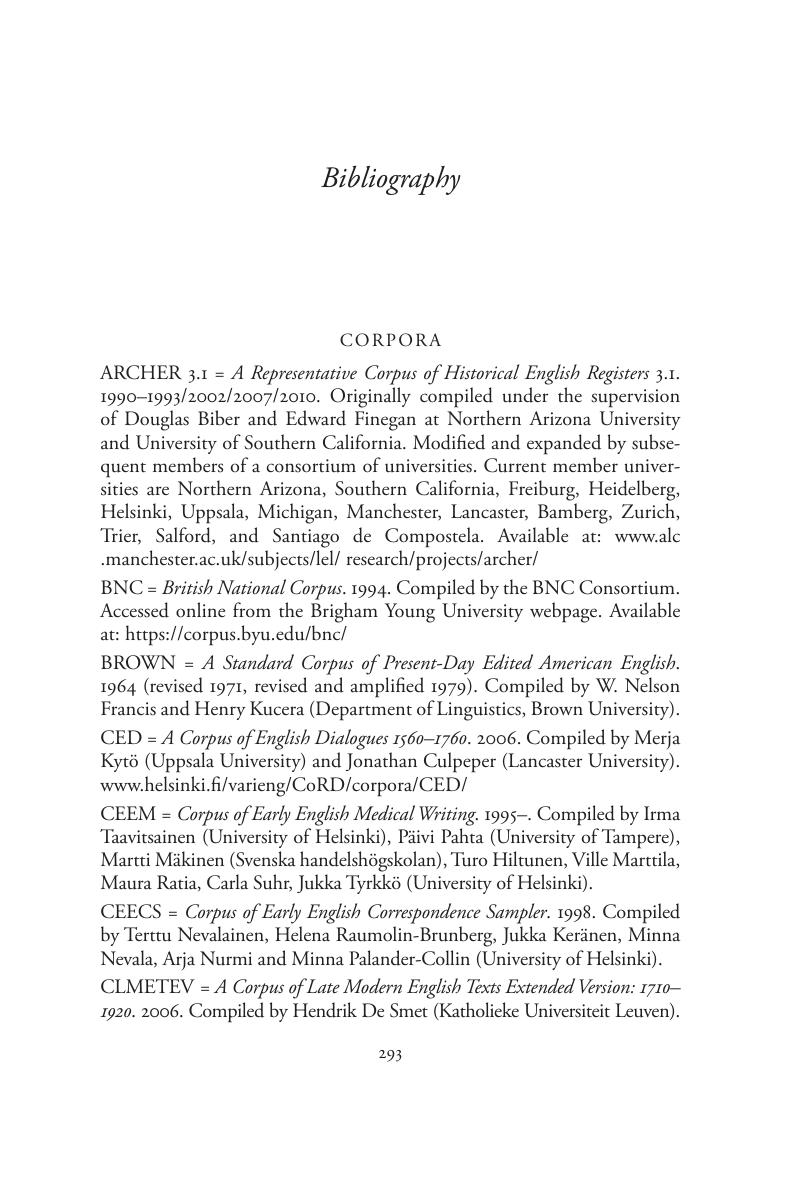Book contents
- The English Phrasal Verb, 1650–Present
- Studies in English Language
- The English Phrasal Verb, 1650–Present
- Copyright page
- Contents
- Figures
- Tables
- Acknowledgements
- Abbreviations
- Chapter 1 Introduction
- Chapter 2 Corpus and Methodology
- Chapter 3 Delimiting the Scope of the Study
- Chapter 4 The Relationship between Phrasal Verbs and the Processes of Grammaticalisation, Lexicalisation, and Idiomatisation
- Chapter 5 Phrasal Verbs 1650–1990
- Chapter 6 Phrasal Verbs 1650–1990
- Chapter 7 Conclusion
- Book part
- Bibliography
- Index
- References
Bibliography
Published online by Cambridge University Press: 18 January 2019
- The English Phrasal Verb, 1650–Present
- Studies in English Language
- The English Phrasal Verb, 1650–Present
- Copyright page
- Contents
- Figures
- Tables
- Acknowledgements
- Abbreviations
- Chapter 1 Introduction
- Chapter 2 Corpus and Methodology
- Chapter 3 Delimiting the Scope of the Study
- Chapter 4 The Relationship between Phrasal Verbs and the Processes of Grammaticalisation, Lexicalisation, and Idiomatisation
- Chapter 5 Phrasal Verbs 1650–1990
- Chapter 6 Phrasal Verbs 1650–1990
- Chapter 7 Conclusion
- Book part
- Bibliography
- Index
- References
Summary

- Type
- Chapter
- Information
- The English Phrasal Verb, 1650–PresentHistory, Stylistic Drifts, and Lexicalisation, pp. 293 - 318Publisher: Cambridge University PressPrint publication year: 2019



